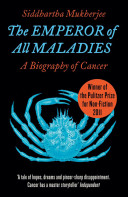The Two Kinds of Cell Growth
In 1838, Matthias Schleiden, a botanist, and Theodor Schwann, a physiologist, both working in Germany, had claimed that all living organisms were built out of fundamental building blocks called cells. Borrowing and extending this idea, Virchow set out to create a “cellular theory” of human biology, basing it on two fundamental tenets. First, that human bodies (like the bodies of all animals and plants) were made up of cells. Second, that cells only arose from other cells—omnis cellula e cellula, as he put it.
The two tenets might have seemed simplistic, but they allowed Virchow to propose a crucially important hypothesis about the nature of human growth. If cells only arose from other cells, then growth could occur in only two ways: either by increasing cell numbers or by increasing cell size. Virchow called these two modes hyperplasia and hypertrophy. In hypertrophy, the number of cells did not change; instead, each individual cell merely grew in size—like a balloon being blown up. Hyperplasia, in contrast, was growth by virtue of cells increasing in number. Every growing human tissue could be described in terms of hypertrophy and hyperplasia. In adult animals, fat and muscle usually grow by hypertrophy. In contrast, the liver, blood, the gut, and the skin all grow through hyperplasia—cells becoming cells becoming more cells, omnis cellula e cellula e cellula.
Notes:
Hypertrophy and hyperplasia, cells either grow bigger or grow more numerous.
Folksonomies: biology cells cell growth
Taxonomies:
/health and fitness/disease/cancer (0.542104)
/health and fitness/disease (0.456226)
/science/biology/cytology (0.321982)
Keywords:
cells (0.942451 (negative:-0.370114)), Cell Growth Hypertrophy (0.788837 (negative:-0.401478)), cellula e cellula (0.679312 (neutral:0.000000)), fundamental building blocks (0.658020 (neutral:0.000000)), crucially important hypothesis (0.620927 (positive:0.286028)), modes hyperplasia (0.549481 (negative:-0.486101)), Theodor Schwann (0.531558 (neutral:0.000000)), Matthias Schleiden (0.504541 (neutral:0.000000)), fundamental tenets (0.504290 (positive:0.205121)), cellular theory (0.482032 (neutral:0.000000)), human biology (0.473411 (neutral:0.000000)), human bodies (0.472573 (neutral:0.000000)), cells—omnis cellula (0.468910 (neutral:0.000000)), cell numbers (0.461539 (neutral:0.000000)), cell size (0.461195 (neutral:0.000000)), adult animals (0.459666 (neutral:0.000000)), individual cell (0.456839 (neutral:0.000000)), human growth (0.455451 (positive:0.286028)), human tissue (0.452481 (negative:-0.212579)), contrast (0.375180 (neutral:0.000000)), Virchow (0.352224 (positive:0.292638)), physiologist (0.350745 (neutral:0.000000)), botanist (0.349131 (positive:0.235405)), gut (0.339033 (neutral:0.000000)), organisms (0.337628 (neutral:0.000000)), Kinds (0.335956 (negative:-0.401478)), Germany (0.335647 (neutral:0.000000)), virtue (0.335637 (neutral:0.000000)), idea (0.333594 (neutral:0.000000)), plants (0.332560 (neutral:0.000000))
Entities:
Virchow:Person (0.924220 (positive:0.033058)), Theodor Schwann:Person (0.735021 (neutral:0.000000)), human biology:FieldTerminology (0.688881 (neutral:0.000000)), Matthias Schleiden:Person (0.662128 (neutral:0.000000)), Germany:Country (0.554799 (neutral:0.000000))
Concepts:
Biology (0.956946): dbpedia | freebase | opencyc
Theodor Schwann (0.750290): dbpedia | freebase | yago
Organism (0.738656): dbpedia | freebase
Cell (0.731947): dbpedia | freebase
DNA (0.620388): website | dbpedia | freebase | yago
Gene (0.612940): dbpedia | freebase
Bacteria (0.594401): dbpedia | freebase | opencyc
Cell theory (0.590751): dbpedia | freebase





